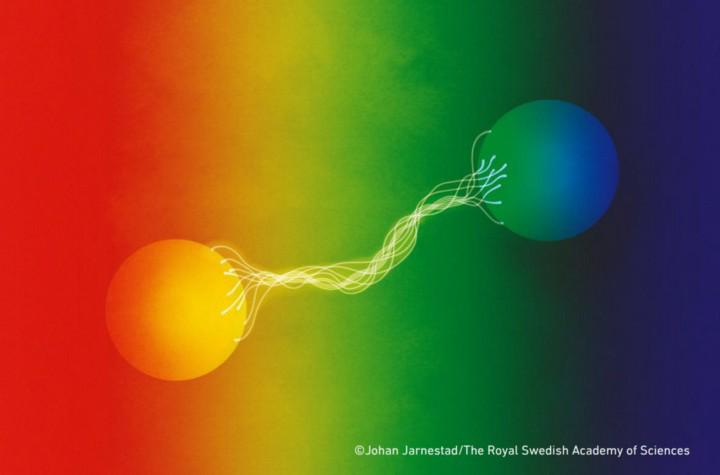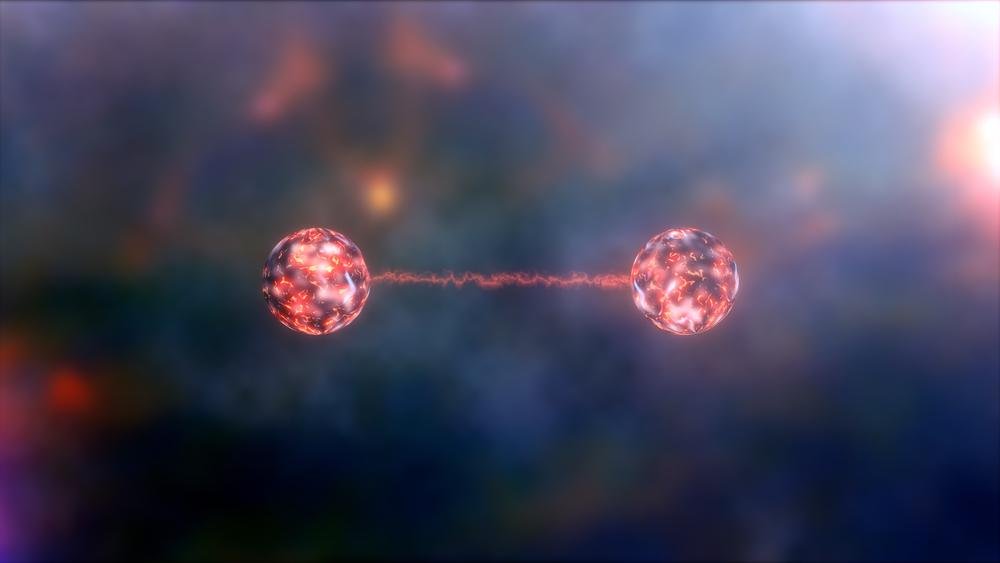On Tuesday of last week (4), the Royal Swedish Academy of Sciences announced the winners of the 2022 Nobel Prize in Physics at the most famous ceremony in the world of science.
The laureates were physicists John Clauser, Alain Aspect and Anton Zeilinger. by conducting innovative experiments using entangled quantum states where two particles behave as a single unit even when separated. The results of their research paved the way for new technologies based on quantum information, and the science behind them is particularly impressive.
But what is quantum entanglement and what is it about?
To explain this concept, we need to go back in a few lines, more specifically to the beginning of the 20th century.
One of the most fundamental laws of physics – undisputed since Einstein first miraculously established it in 1905 – is that nothing in terms of matter or energy can travel above the speed of light.. In other words, no signal carrying information of any kind can travel faster than around 300,000 kilometers per second in the Universe.
Particles with or without mass are needed to transmit information from one place to another, and these particles are forced to move at speeds below the speed of light for massive particles or at limit speeds for massless particles.
Since the development of quantum mechanics in the 1920s and beyond, these rules, imposed by nature and explained by the Theory of Relativity, were believed to be overturned by another natural property of certain particles in our Universe: quantum entanglement.
While there are many puzzles in quantum physics that, by the way, are notorious for challenging our intuition, conceptually, quantum entanglement (also called quantum entanglement) is a relatively simple idea.

We can discuss this concept using a common analogy: flipping a coin. If you and someone else take a standard coin of one dollar each and toss it in the air, there is an equal probability of two tosses, 50% heads and 50% chance when the coin lands. turning. crown face.
The results obtained in your launch and the results submitted by the other person are completely random, independent and unrelated while offering the same probabilities. So whether you get heads or heads has nothing to do with the result of the second coin toss.
However, now consider that these coins are not common standard artifacts, but rather “quantum” coins. Now, the spins of a quantum system, no longer of a classical system – indicate the probability of coins getting entangled.
In this case, each toss may have a 50% probability of getting a coin or a tail, but if you flip a coin and it lands, for example, you will instantly be able to guess with greater than 50 accuracy. The .% is the result of the other person’s rounding.
How is this possible?
According to quantum entanglement, it is as if there is an invisible thread connecting two coins, and when one of the shots is measured, the other person will instantly learn something about the result of the other coin exceeding classical randomness.

In experimental physics, what scientists can do is create entangled pairs of photons that are separated by great distances to get two independent measurement sources that will tell you what the quantum state of each particle is. When physicists compare these results, they surprisingly find that the results are correlated!
Even if we separate two entangled photons by distances of hundreds of kilometers, if a physical property (such as spin) is measured on one photon, it will be estimated by the result of measuring the same property on the other photon. about 75% accuracy instead of the standard 50%.
So if the distance between two entangled particles is very large, say 1 million light years away, does that mean that the speed of information transfer between them exceeds the speed of light?
Not really. The truth is that there is too much subtlety about how quantum entanglement works in practice that cannot be laid out correctly and didactically in a few lines. But in summary, one of its main implications is that there is no measurement procedure you can apply to force a particular result while maintaining entanglement between particles. So, inevitably, the measures will still have a random aspect inherent in the process.
This means that the result of any quantum measurement will inevitably be random, making it impossible to transmit information at speeds higher than the speed of light. In this way, causality is still preserved and valid for our Universe.
Source: Tec Mundo
I am Bret Jackson, a professional journalist and author for Gadget Onus, where I specialize in writing about the gaming industry. With over 6 years of experience in my field, I have built up an extensive portfolio that ranges from reviews to interviews with top figures within the industry. My work has been featured on various news sites, providing readers with insightful analysis regarding the current state of gaming culture.













